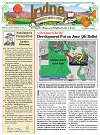 With spring sports in full force, it’s important to review basic sports injury care.
With spring sports in full force, it’s important to review basic sports injury care.
While nobody expects a parent or athlete to diagnose or treat injuries, some basic first aid and a bit of common sense can be of help.
Here are a few suggestions:
- In an injury situation, if there is any doubt about the severity of the injury, do not try to move the athlete.
- Remain calm and dial 911 to activate the emergency response system.
- Do not hesitate to postpone the game or practice session while waiting for medical help to arrive.
Some injuries are rather dramatic, such as an athlete who is knocked out or a player who suffers a broken bone. However, most injuries are not so obvious.
Below are some particular signs of concern:
- Any limp or limited use of an arm or leg
- Any change in technique to protect an injured area
- Obvious swelling or bleeding
- Dramatic change in the young athlete’s performance (running speed, usual aggressiveness)
- Discomfort that is greater than usual post-activity soreness or lasts more than 1-2 hours after a game or practice
- Pain greater than 2-3 on the 1-10 self-reported pain grading scale (1= no pain, 10=major pain)
- Remove the player from activity and evaluate the injury to the best of your ability.
- The athlete should not return to activity until he/she can run, jump, cut, turn and do sport-specific motions (kick, throw, serve) without any limitations or change in technique.
- If there is any doubt, get a qualified evaluation.
- Realize that prolonged immobilization or crutch use can complicate an injury, thus expert evaluation is key.
- Allow limited and relatively pain-free range of motion (such as bending the knee, ankle or elbow).
- Ace wraps or other large bandages applied firmly (but not too tightly) around the injury site can also help reduce swelling and pain.
- For years, ice was a standard treatment after injuries. Now there is concern that ice or cold may slow recovery and some athletes do not have reduced pain or swelling with ice or cold packs. So, the decision to use ice/cold is more of an individualized decision.
- If used, ice or cold should be applied for 20-minute intervals every 1-2 hours in the first few days after injury.
- It is best not to put ice directly on the skin to reduce the risk of frostbite-like damage. Instead, use a bag or towel between ice and the skin.
The most important way to reduce excessive swelling after an injury is to keep the injured body part above the level of the heart. This may require propping a leg on pillows when seated or even using those pillows under the leg for sleep
How to Treat Cuts & Bleeding Wounds
The main goal of treatment is to stop bleeding and prevent infection. The first is accomplished by applying pressure over the injured area (if you can).
Bleeding that persists beyond 20 minutes should be checked by a medical professional. If the bleeding is from an accessible area, you should be applying enough pressure to stem the bleeding. If the bleeding is from an inaccessible area (like the mouth), the best you can do is to wait 20 minutes to see if the bleeding stops.
The second goal of treatment, preventing infection, is done by keeping the wound clean with soap and water. You should wash a wound 2 to 4 times per day with soap and water.
When You Should Seek More Urgent/Emergent Medical Care
Injuries that deserve more immediate medical evaluation may include:
- Obvious bone deformities, bones/joints that look “out of place” or any injuries with open skin.
- No ability to move arms or legs.
- Legs or arms turning abnormal colors (especially pale, blue or bright red).
- Increasing levels of pain.
- Any injury which causes great concern for the athlete or parent.
- Possible head injury with vomiting, worsening headache, loss of consciousness, or child acting less aware of things going on around him/her.
We urge parents and caregivers to keep a first aid kit in their car.
- Prevent a Holiday Illness by Ensuring Your Family is Vaccinated Against Preventable Diseases - December 18, 2025
- Holiday Safety Tips - December 16, 2025
- Immunizations Against Preventable Diseases Save Lives - September 30, 2025



